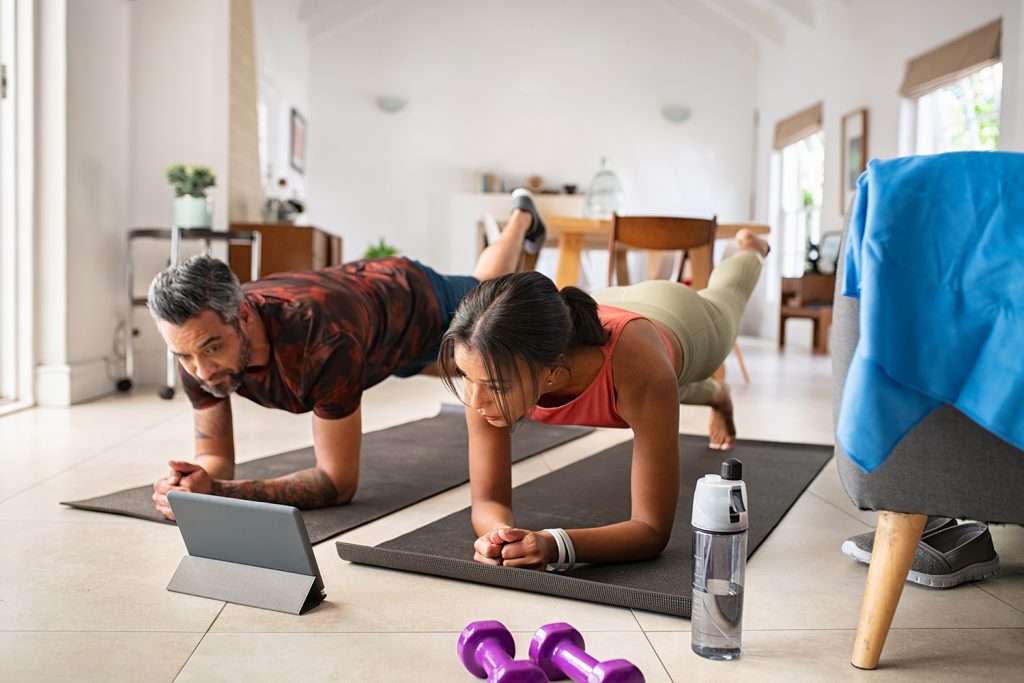
Research has shown that it’s important to get all four types of exercise: endurance, strength, balance, and flexibility. Each one has different benefits. Doing one kind can also improve your ability to do the others, and variety helps reduce boredom and the risk of injury. Here are the basics on the four types of exercise from the National Institute on Aging. No matter your age, you can find activities that meet your fitness level and needs.
ENDURANCE
Endurance activities, often called aerobics, increase your breathing and heart rate. These exercises improve the health of your heart, lungs, and circulatory system. They also can delay or prevent many diseases that are common in older adults, such as diabetes, colon and breast cancers, heart disease, and others. Physical activities that build endurance include:
- Brisk walking or jogging
- Yard work (mowing, raking)
- Dancing
- Swimming
- Biking
- Climbing stairs or hills
- Playing tennis or basketball
Build up to at least 150 minutes of weekly activity that makes you breathe hard. To reach this goal, try to be active throughout your day and avoid sitting for long periods.
STRENGTH
Your muscular strength can make a big difference. Strong muscles help you stay independent and make everyday activities feel easier, like getting up from a chair, climbing stairs, and carrying groceries. Keeping your muscles strong can help with your balance and prevent falls and fall-related injuries. Some people call using weight to improve your muscle strength “strength training” or “resistance training.”
If you choose to use weights to help improve your strength, start using light weights first, then gradually add more when you can easily do two sets of 10 to 15 repetitions. You can also use resistance bands, stretchy elastic bands with varying strengths. Try to do strength exercises for all your major muscle groups at least twice a week, but don’t exercise the same muscle group on any two days in a row.
BALANCE
Balance exercises help prevent falls, a common problem in older adults that can have serious consequences. Many lower-body strength exercises also will improve your balance. Other balance exercises include yoga, Tai Chi, standing on one foot, and the heel-to-toe walk.
FLEXIBILITY
Stretching can improve your flexibility. Moving more freely will make it easier to tie your shoes or look over your shoulder when you back your car out of the driveway. Make sure to stretch after endurance or strength exercises, and don’t stretch so far that it hurts. Always remember to breathe normally while holding a stretch. Talk with your doctor if you are unsure about a particular exercise.



